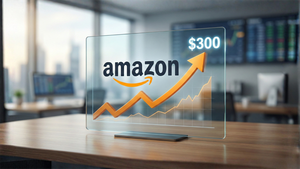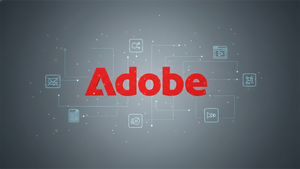
Despite widespread market expectations for a September interest rate cut, the Federal Reserve finds itself navigating a perilous economic landscape marked by persistently high inflation. Stubbornly "sticky" services inflation, coupled with the escalating impact of new tariffs on core goods, is creating a complex dilemma for policymakers. While a cooling labor market has fueled hopes for a dovish pivot, August's upcoming Consumer Price Index (CPI) report looms large, threatening to disrupt these projections and force the Fed to re-evaluate its strategy.
The current economic outlook is a tightrope walk for the central bank, balancing the urgent need to rein in prices with the imperative to avoid a significant downturn in employment. The market's near-certainty of a rate cut following recent labor market data may be premature, as the true extent of tariff-induced price hikes and the entrenched nature of services inflation could yet derail these plans, keeping the Federal Reserve on edge and investors guessing.
Persistent Inflationary Pressures Mount as Tariffs Take Hold
The narrative of "transitory" inflation has long faded, replaced by concerns over its persistent nature, particularly evident in the services sector. August's core Consumer Price Index (CPI) is projected to remain elevated, with some forecasts suggesting it could settle above a 3% year-over-year trend. This persistence is largely attributed to what economists call "sticky services inflation," encompassing sectors like shelter, recreation, and medical care, which are less responsive to traditional monetary tightening. Indeed, the July 2025 core CPI showed a 0.3% increase, pushing the year-over-year rate to a five-month high of 3.1%.
Adding another layer of complexity are new tariffs implemented in 2025, which are now visibly beginning to impact goods prices. The average effective tariff rate on imported core Personal Consumption Expenditures (PCE) goods surged to 12.1% in June 2025, a stark increase from 4.2% in June 2024. While businesses initially absorbed some of these elevated costs, delaying the immediate impact on consumers, the pass-through is now expected to be gradual but worsening. The Producer Price Index (PPI) for final demand services also saw a significant jump of 1.1% in July 2025, indicating that the higher costs faced by businesses are beginning to translate into higher prices for consumers. This tandem rise in goods and services prices presents a formidable challenge to the Federal Reserve's (US: FED) goal of achieving a 2% inflation target.
The timeline leading up to this moment has seen a series of evolving inflationary concerns. Initially, supply chain disruptions during the pandemic were blamed. Later, robust consumer demand and a tight labor market fueled price increases. Now, as some of those factors ease, tariffs and the inherent stickiness of services inflation have emerged as the dominant drivers. Key players include the Federal Reserve, tasked with managing monetary policy; the US Treasury (US: UST), which implements trade policies; and, of course, consumers and businesses who bear the brunt of rising costs.
Initial market reactions to the prospect of persistent inflation, despite the dovish signals from the Fed, have been mixed. While equity markets initially cheered the prospect of rate cuts, the underlying inflation data continues to inject an element of uncertainty. Bond yields have seen some volatility as traders weigh the likelihood of a September cut against the risk of the Fed being forced to maintain a more hawkish stance to combat entrenched inflation. The upcoming August CPI report, scheduled for Thursday, September 11th, will be a crucial determinant for market sentiment and the Fed's imminent decision at its September 17th meeting.
Winners and Losers Emerge in an Inflationary Environment
The dual forces of sticky services inflation and tariff-induced price hikes are creating a clear delineation between winners and losers across the corporate landscape. Companies possessing robust pricing power and direct exposure to rising commodity prices are generally better positioned to navigate, and even thrive, in this challenging environment. Conversely, businesses with high input costs, a reliance on consumer discretionary spending, and vulnerabilities in global supply chains face significant headwinds.
Among the potential beneficiaries are companies in consumer staples, which produce essential goods that consumers prioritize regardless of economic conditions. Giants like Coca-Cola (NYSE: KO), The Hershey Company (NYSE: HSY), and Procter & Gamble (NYSE: PG) have historically demonstrated the ability to pass on increased costs to consumers without a significant drop in demand, thereby protecting their profit margins. Similarly, healthcare providers and pharmaceutical companies, such as Johnson & Johnson (NYSE: JNJ) and Thermo Fisher Scientific (NYSE: TMO), often benefit from inelastic demand for their services and products. The energy sector, including major players like ExxonMobil (NYSE: XOM) and Chevron (NYSE: CVX), directly benefits from rising energy prices, which translate into increased revenue and profitability. Certain technology firms with proprietary designs, such as Broadcom (NASDAQ: AVGO), and luxury brands also exhibit strong pricing power due to high demand and less price-sensitive customer bases. Financial institutions, including major banks, also stand to benefit from higher interest rates that often accompany inflation, expanding their net interest margins.
On the losing side are companies burdened by high input costs and those sensitive to consumer belt-tightening. The manufacturing and industrials sectors, heavily reliant on raw materials, energy, and labor, are particularly vulnerable. Firms with complex global supply chains, such as automotive manufacturers or consumer electronics producers, face escalating costs for components like steel, aluminum, and semiconductors, exacerbated by tariffs. Airlines and transportation companies, including FedEx (NYSE: FDX), are directly impacted by surging fuel costs, which inflate operating expenses and can squeeze profit margins.
The consumer discretionary sector is also under considerable pressure. When inflation erodes purchasing power, consumers typically cut back on non-essential goods and services. This impacts retailers like Walmart (NYSE: WMT), Target (NYSE: TGT), and Costco (NASDAQ: COST), which may struggle to pass on tariff-driven price increases without losing sales volume. Restaurants like McDonald's (NYSE: MCD) and Starbucks (NASDAQ: SBUX) also contend with both higher food ingredient costs and reduced foot traffic as consumers become more frugal. Furthermore, highly leveraged companies and many growth stocks face rising debt servicing costs due to higher interest rates, while their valuations suffer as future earnings are discounted more heavily. The "stickiness" of services inflation, driven by persistent wage pressures and housing costs, further squeezes profit margins in labor-intensive sectors like hospitality and retail, creating a challenging environment for businesses to maintain profitability without alienating price-sensitive customers.
Broader Implications: Reshaping Global Trade and Policy Dilemmas
The confluence of persistent inflation and escalating tariffs is not merely an economic blip; it is a fundamental force reshaping global industry trends, supply chains, and the very fabric of regulatory and monetary policy. This environment is characterized by a resurgence of protectionism, leading to projected shrinkage in global trade volumes and a re-evaluation of long-standing business strategies.
Across various sectors, the ripple effects are profound. The manufacturing and industrial sectors are bearing the brunt of higher costs for imported raw materials and components, exacerbated by tariffs. This has prompted a growing trend toward reshoring production and an increase in mergers and acquisitions as companies seek greater control over their supply chains. The technology sector is likewise grappling with inflated costs for imported components, leading to strategic acquisitions aimed at diversifying revenue streams and accelerating investments in domestic manufacturing to circumvent tariff-driven disruptions. The consumer goods and retail sectors are seeing a decline in U.S. retail sales, forcing companies to re-evaluate pricing strategies and operational efficiencies. While businesses initially absorbed some additional tariff costs to maintain market share, this strategy is proving unsustainable, leading to anticipated price increases for consumers. Small and mid-sized businesses, in particular, are struggling with the increased compliance costs associated with navigating complex tariff regimes.
This scenario presents a significant dilemma for governments and central banks. The Federal Reserve (US: FED), tasked with maintaining price stability and maximum employment, faces a tightrope walk as persistent inflation, fueled by tariffs and supply chain shifts, complicates interest rate decisions. There are growing concerns that political pressure could compromise the Fed's independence, potentially eroding its credibility and leading to a self-fulfilling cycle of higher inflation. On the policy front, the legality of some tariffs, particularly those imposed under acts like the International Emergency Economic Powers Act (IEEPA), remains under scrutiny, creating considerable regulatory uncertainty. Historically, the imposition of tariffs often triggers retaliatory measures from other countries, further disrupting global trade and supply chains, as was evident during the U.S.-China trade war from 2018-2020. That period demonstrated how tariffs could contribute between 0.1 to 0.2 percentage points to core Personal Consumption Expenditures (PCE) inflation. The current 2025 tariffs, being considerably larger, suggest an even greater potential for significant inflationary impact.
Historical precedents underscore the gradual nature of tariff-induced inflation, which often peaks roughly a year after implementation, as companies initially absorb costs before passing them on to consumers. This current situation, reminiscent of past eras where tariffs played a more prominent role in government revenue or where political interference influenced monetary policy (e.g., the Nixon-Burns era), highlights the intricate interplay between trade policy, fiscal measures, and central bank actions in shaping the economic landscape. The ongoing supply chain restructuring, driven by a desire for resilience over pure efficiency, marks a significant shift from the "just-in-time" models of the past, suggesting a more fundamental and lasting impact on global commerce.
What Comes Next: A Tightrope Walk for the Fed and Strategic Shifts for Businesses
The path forward for the Federal Reserve, businesses, and investors is fraught with uncertainty, balancing the persistent inflationary pressures with the need to sustain economic growth. The immediate short-term outlook suggests the Fed will likely maintain a "modestly restrictive" policy rate, pushing back on aggressive market expectations for a rapid series of rate cuts. While Wall Street has largely priced in a September rate cut, especially after recent labor market data, the Fed's cautious stance and the continued stickiness of inflation, exacerbated by tariffs, imply that any cuts will be delayed or more gradual than anticipated. Premature easing, particularly with inflation still elevated, risks re-igniting inflationary spirals, harming real disposable income, and potentially weakening the dollar.
In the long term, the Fed generally anticipates inflation will converge toward its 2% target by the second half of 2026. This hinges on the fading effects of tariffs, sustained below-trend real GDP growth, and well-anchored longer-term inflation expectations. However, future policy decisions will remain highly data-dependent. If inflation proves more persistent, potentially fueled by strong wage growth or a more significant pass-through of tariff costs, the Fed might be forced into a "higher-for-longer" interest rate environment. This scenario would continue to pressure growth stocks and make borrowing more expensive across the board. The interplay of fiscal policies, such as potential tax cuts, with higher tariffs and a tightening labor supply, could further complicate the Fed's ability to achieve its dual mandate.
For businesses, strategic pivots are imperative for resilience. Reassessing pricing strategies and focusing on efficiency through automation and cloud-based solutions will be crucial to protect eroding profit margins. Diversifying supply chains, moving away from over-reliance on single regions, and strengthening regional trade partnerships (a "China Plus One" strategy) can mitigate tariff exposure and build resilience against future disruptions. Furthermore, businesses will need to prioritize cash flow management, secure long-term vendor agreements, and focus on customer retention through loyalty programs and value-based offerings as consumers become more price-sensitive. Innovation and diversification into new product lines or markets will also be key to adapting to changing consumer needs and maintaining competitiveness in an uncertain economic climate.
Conclusion: A Delicate Balance and a Wary Eye on the Horizon
The current economic juncture, characterized by persistent inflation, the re-emergence of significant tariffs, and stubbornly sticky services prices, presents a formidable and multifaceted challenge for the U.S. economy. The Federal Reserve finds itself on a precarious tightrope, attempting to guide inflation back to its 2% target without triggering an undue slowdown in the labor market. The "last mile" of disinflation is proving to be the most challenging, as both domestic and international factors continue to exert upward pressure on prices.
The key takeaways from this evolving scenario are clear: inflation is more entrenched than initially hoped, with core measures consistently above the Fed's target. Tariffs are actively contributing to this pressure, slowly passing through to consumer and investment goods, adding a layer of complexity to the Fed's calculations. Crucially, sticky services inflation, driven by elements like housing and labor costs, is proving particularly resistant to monetary tightening, suggesting a deeper structural issue within the economy. This confluence of factors means that the Fed's dilemma is profound: cutting rates too soon risks reigniting inflationary spirals, while holding them too high for too long could stifle economic growth and employment.
Moving forward, the market remains caught between the desire for interest rate cuts and the reality of persistent price pressures. While the softening labor market has fueled hopes for a September rate cut, the Fed's cautious rhetoric, coupled with the ongoing inflationary threats, suggests that a "higher for longer" interest rate environment remains a distinct possibility. This uncertainty will likely continue to drive market volatility, with policy decisions and economic data releases dictating sentiment. The lasting impact of this period could be a fundamental re-evaluation of global supply chains and trade policies, shifting away from pure efficiency towards greater resilience and localization.
Investors in the coming months should maintain a wary eye on several critical indicators. The upcoming CPI and Producer Price Index (PPI) reports will be paramount in gauging the speed at which tariffs are being passed through and the trajectory of services inflation. Further softening in labor market data, including job growth and wage figures, will influence the Fed's dovish leanings. Close scrutiny of Federal Reserve communications, particularly statements from the September Federal Open Market Committee (FOMC) meeting, will provide crucial insights into their evolving stance. Finally, observing corporate earnings and margins will reveal how effectively businesses are managing the increased input costs from tariffs and sticky services, offering a real-time pulse on the underlying health and inflationary pressures within the economy. Given the potential for stagflation, diversification into inflation-hedging assets, such as real estate, commodities, and inflation-indexed bonds, may also prove prudent.




